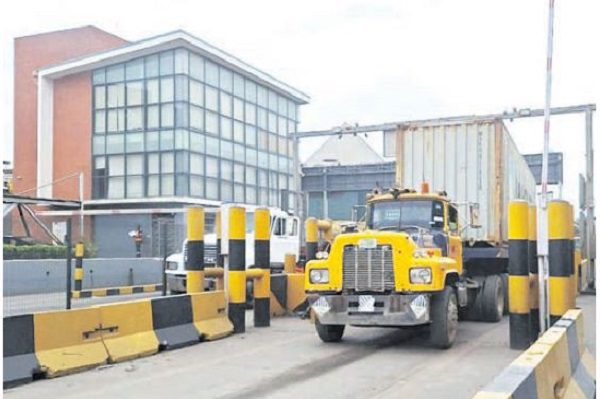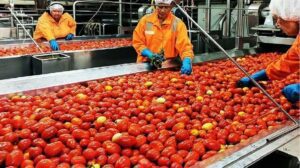For years, Apapa, Nigeria’s premier port district, was synonymous with chaos. Long queues of articulated trucks snaked across bridges and highways, paralysing business and trapping commuters for hours. By 2018, the gridlock had grown into a national embarrassment, costing billions in man-hours and crippling port productivity. But in 2021, a quiet revolution began. Nigerian Ports Authority (NPA), in partnership with Trucks Transit Parks Limited (TTP), rolled out Ètò—an electronic call-up and truck scheduling system designed to tame the chaos. AFIONG EDEMUMOH writes.
Four years later, and following the recent deployment of “electronic barrier systems” across all terminals within the Lagos Port Complex, sanity has returned to Apapa’s roads.
Despite criticisms from “entrenched interests” seeking to profit from disorder, NPA data and on-ground observations tell a different story: traffic now moves in structured lanes, access to terminals is digitally regulated, and cargo evacuation is faster than at any time in the last decade.
The Ètò Electronic Call-Up System, designed and managed by TTP, is at the heart of this transformation. It is a digital truck scheduling platform that allocates access slots to trucks heading to the port, ensuring only those with valid electronic call-up tickets can enter designated terminals.
According to NPA, the system’s integration with newly installed “electronic barriers” has sealed previous loopholes. Each barrier, linked directly to the Ètò platform, lifts automatically only for verified trucks assigned to specific terminals. Unauthorised vehicles are denied entry.
Before this, truck drivers routinely diverted between terminals or loitered around the port area, hoping to secure last-minute jobs. These unscheduled movements clogged access roads and caused daily chaos. Now, port entry and exit are digitised, traceable, and almost entirely free of human interference.
“For years, unauthorised truck movements and human interference undermined efficiency in port operations. With the barrier system now active, we have end-to-end control from the point of booking to terminal access and exit,” the General Manager, Operations, NPA, Stella Oladiran said.
She added that the new technology has delivered measurable results: “Key benefits already recorded include improved control of the electronic call-up process, enhanced data accuracy in tracking truck movements, transparent monitoring of inter-terminal traffic, and higher port productivity.”
Digital transformation
To sustain the call-up system, the NPA, working closely with the Lagos State Government and other agencies, developed 29 designated truck parks across Lagos State. Each park is now fully equipped with Ètò infrastructure, including automated gating systems and integrated IT equipment.
From these parks, trucks are only released towards Apapa or Tin Can Island when their call-up time arrives. This sequencing prevents illegal parking along bridges and residential roads.
“Electronic barriers and the Ètò system have brought a level of discipline that was impossible before. It is no longer business as usual for touts, extortionists, or drivers who used to cut corners. Every movement is monitored in real-time,” said a top source in the NPA who is pleading anonymity.
Full integration
While the Ètò system addresses road traffic, the NPA has gone further, promoting a multi-modal transport system that includes rail and barge operations for cargo movement.
The authority takes pride in this development as it enhanced seamless movement of goods into the port. This has been further corroborated by a Kano-based exporter, Mohammed Usman, who said that he was able to save a substantial amount of money following the transportation of his goods, about 100 tons of millet from Kano to Lagos by rail for onward transshipment to its final destination.
“I spent almost 50 per cent less as haulage cost to move my millets in containers from Kano Railway Station to Lagos Port. If these cargoes were moved by trucks, it would have cost me far more,” he said.
NPA officials confirmed that the reactivation of rail operations for both imports and exports has drastically reduced truck pressure on port roads. The authority has also licensed several barge operators and introduced a regulatory framework to ensure their vessels are seaworthy, fitted with communication equipment, and compliant with operational standards.
“When we approved barge deployment, we discovered many didn’t have proper communication equipment. We directed them to install such and ensure their crafts are seaworthy. This ensures safety and prevents disruptions in the channel,” another souce who pleaded not to be named because he is not authorised to speak on the matter.
Tackling the empty container crisis
Another major reform has been the “NPA’s new policy on empty container management”. The policy mandates shipping lines to take back at least “80 per cent of loaded containers” they bring into Nigeria, in emptinesses or export cargo, before departure.
This directive aims to prevent empty containers from littering port corridors and worsening congestion. Combined with Ètò and electronic barriers, it forms a holistic traffic and logistics control ecosystem that aligns with global port management practices.
Addressing false narratives
Despite visible improvements, the system has not been free from criticism. Recent media reports alleging a “return of gridlock” on port access roads have been dismissed by both port authorities and truck owners as “sponsored misinformation.”
Reacting to the claims, the Port Manager of Lagos Port Complex, Adebowale Lawal, reaffirmed NPA’s commitment to maintaining order and transparency.
“We have recently undertaken a review and enhancement of the Ètò system, which now integrates Terminal Gates directly with the platform. This integration provides structured sequencing of truck movements, both inbound and outbound, within the Apapa Port Complex,” he explained.
He emphasised that the success of the system depends on “cooperation and compliance” from all stakeholders, including terminal operators, unions, drivers, clearing agents, and government agencies.
“Sequencing truck entry and exit is not rocket science. With sincerity of purpose and commitment from all concerned, we can prevent a return to the chaotic conditions of the past. Smooth ingress and egress will, in the long run, bring high turnover for all stakeholders,” Lawal said.
Stakeholders’ views
For truck owners and drivers, the new system has been a relief. The Chairman of the Association of Maritime Truck Owners (AMATO), Remi Ogungbemi, debunked reports of system failure, describing them as “false and exaggerated.”
He said: “All the road arteries leading to the Apapa Port—Wharf Road, Creek Road, and adjoining routes, remain orderly and passable.
“Trucks are moving in a single, regulated lane towards their designated terminals in compliance with safety directives. This organised movement should not be mistaken for gridlock.”
He added: “We urge the public and the media to disregard unfounded rumours. The current traffic situation reflects improved discipline, better enforcement, and enhanced cooperation among stakeholders.”
Ogungbemi also commended NPA and the Lagos State traffic agencies for maintaining enforcement discipline. “We remain committed to continuous collaboration with government agencies and terminal operators to sustain the gains achieved so far,” he stated.
Data integrity
Beyond decongestion, the Ètò and electronic barrier systems have introduced a new level of transparency in port operations. Each truck movement is logged digitally—its booking details, arrival time, and terminal access are all recorded and traceable.
According to NPA, this real-time data allows for better coordination across the logistics chain and provides valuable insights into terminal efficiency, truck turnaround time, and cargo throughput.
“Previously, a lot of the inefficiency was due to the absence of reliable data,” said a TTP systems engineer familiar with the deployment. “Now, every truck’s journey is logged from park to terminal exit. This gives the Authority visibility it never had before.”
The data, he said, is also helping NPA enforce compliance and sanction defaulting terminals or trucking companies that attempt to manipulate the system.
General Manager, Corporate and Strategic Communications, NPA, Ikechukwu Onyemekara, in a statement, dismissed insinuations that the system had collapsed, attributing such claims to “mischief by meddlesome interlopers.”
He said: “The era of all forms of illegality in truck access to ports is over. The electronic call-up system is a global best practice, and with the electronic barrier now in place at all terminals, practices that encourage chaos along the port corridor are no longer possible.”
Onyemekara noted that the NPA would continue to collaborate with genuine stakeholders to strengthen the system and sustain efficiency. “We remain committed to engaging all who are genuinely invested in the growth of Nigeria’s maritime industry,” he added.
The road ahead
For the first time in decades, Apapa’s roads are relatively calm. While occasional bottlenecks occur—mostly due to external factors like bridge repairs or law enforcement lapses, the scale of disorder witnessed in 2018 and 2019 has not resurfaced.
Industry analysts argue that NPA’s digital transformation could serve as a model for other congested African ports. By merging automation with enforcement, Nigeria has shown that technology can succeed where manual control failed.
Still, sustaining these gains will require vigilance. Stakeholders warn that the temptation to revert to old habits—bribes, queue-jumping, and unregulated parking; remains ever-present.
“The system is working. But we must keep it transparent and continue to block loopholes. Once enforcement weakens, the old chaos can return,” said Andy Orji, a clearing agent who operates daily at Apapa.
The story of Ètò is ultimately one of persistence and reform. When the system was introduced, it faced fierce resistance from those who benefitted from disorder—middlemen, extortionists, and rogue operators. The NPA, however, held its ground.
Today, with the integration of electronic barriers and the promotion of multimodal transport systems, the authority has achieved what years of task forces, roadblocks, and manual interventions could not: a functional, technology-driven solution to port traffic.
For residents, truckers, and businesses along the corridor, the difference is visible. The Apapa of 2018, where a journey of five kilometres could take eight hours, is gradually becoming a memory.
And as digital systems continue to shape Nigeria’s port reforms, Ètò, industry players agree, stands as a testament to what can happen when innovation meets institutional will.














